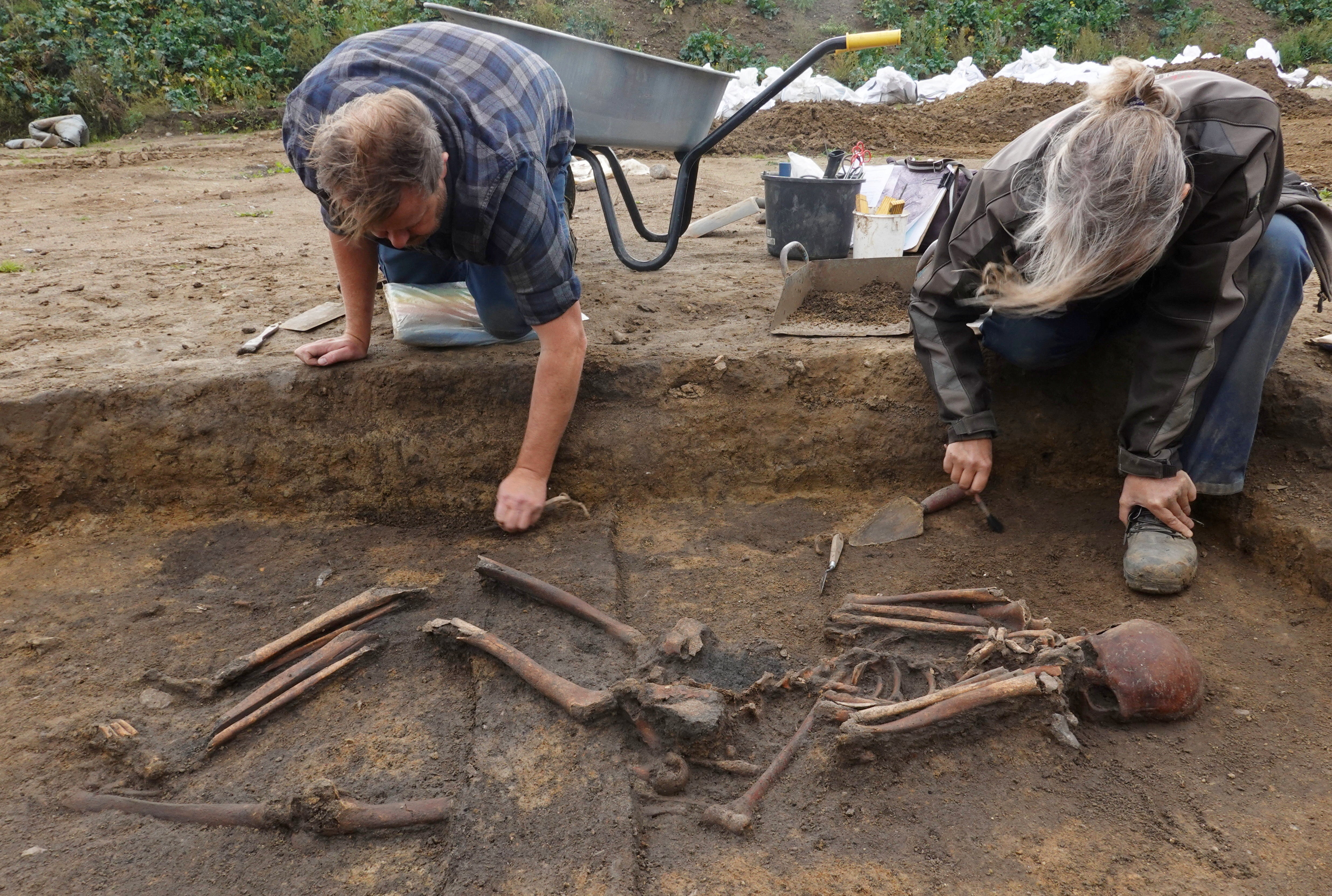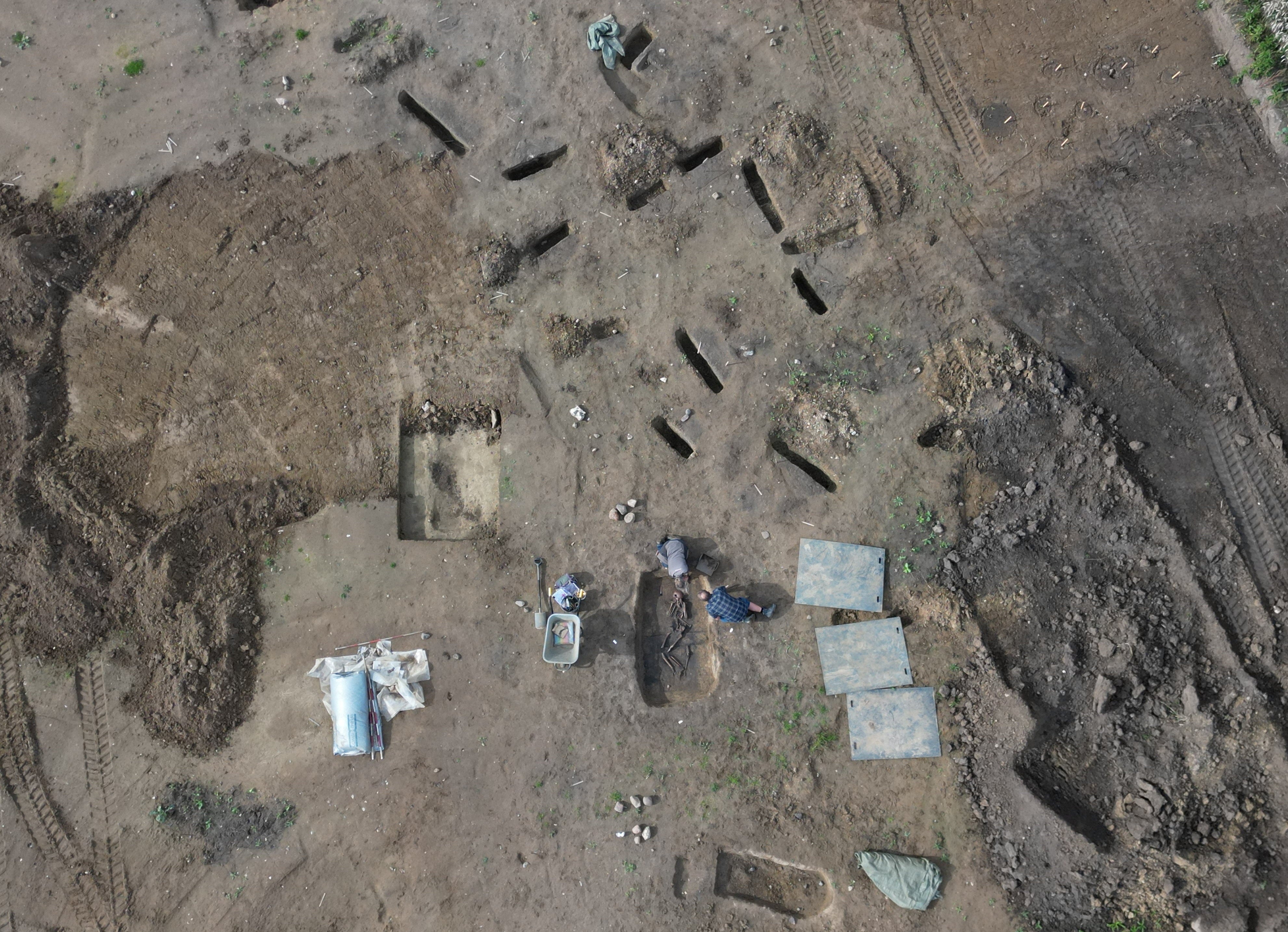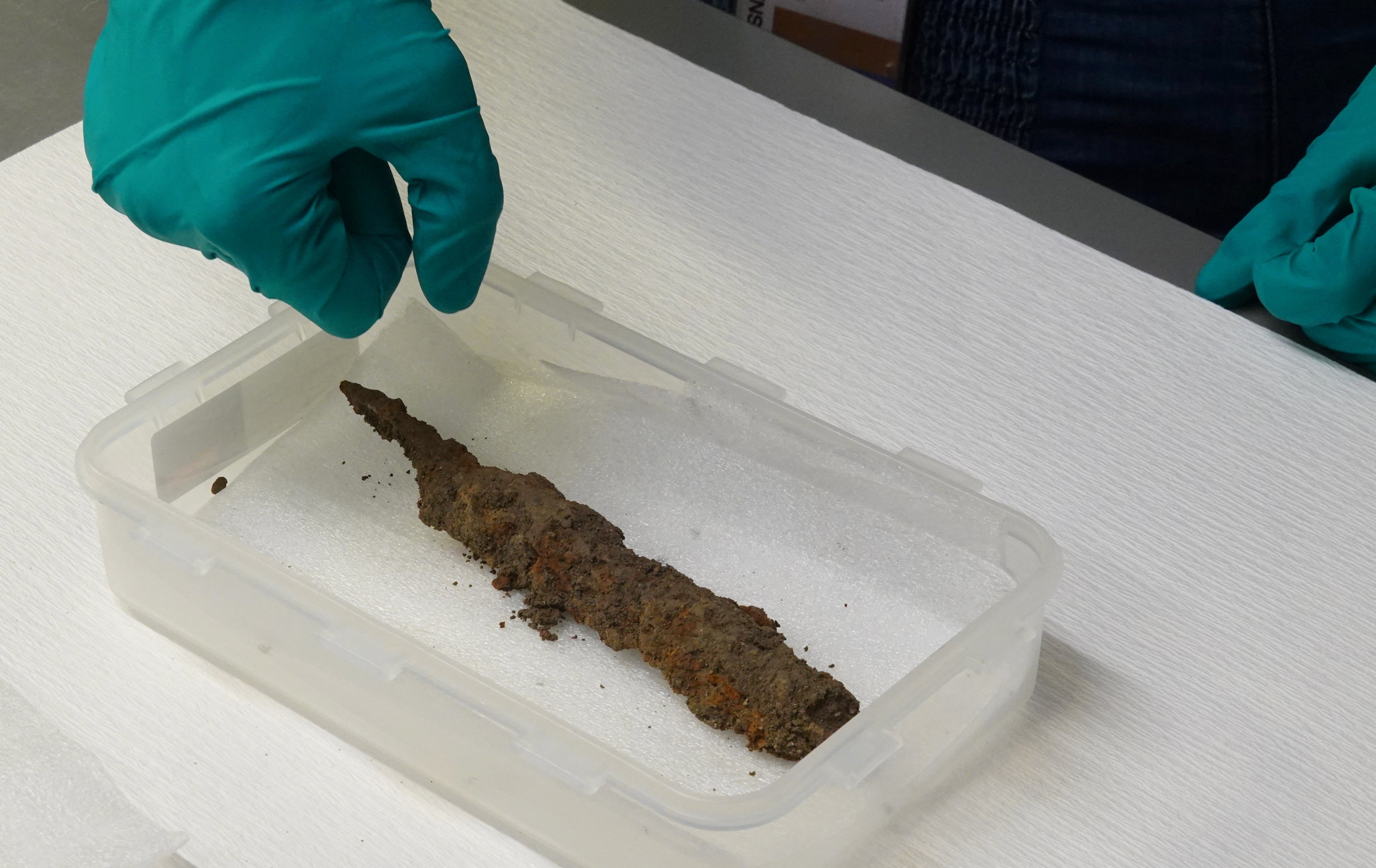Archaeologists dig up huge burial site that could change what we know about Vikings
The skeletons were kept intact by high water levels

Your support helps us to tell the story
From reproductive rights to climate change to Big Tech, The Independent is on the ground when the story is developing. Whether it's investigating the financials of Elon Musk's pro-Trump PAC or producing our latest documentary, 'The A Word', which shines a light on the American women fighting for reproductive rights, we know how important it is to parse out the facts from the messaging.
At such a critical moment in US history, we need reporters on the ground. Your donation allows us to keep sending journalists to speak to both sides of the story.
The Independent is trusted by Americans across the entire political spectrum. And unlike many other quality news outlets, we choose not to lock Americans out of our reporting and analysis with paywalls. We believe quality journalism should be available to everyone, paid for by those who can afford it.
Your support makes all the difference.Archaeologists have dug up a huge burial site that could change what the world knows about the Viking times.
The excavation of a large Viking-era burial site in Denmark has unearthed 50 unusually well-preserved skeletons that archaeologists expect will help shed light on the lives of the Nordic people best known for their seafaring exploits in the Middle Ages.
The skeletons, discovered near Denmark’s third-largest city Odense, were kept intact by high water levels and favorable soil conditions that prevented them from decomposing, according to Michael Borre Lundoe, the excavation leader from Museum Odense.
“Normally when we excavate Viking graves, we’d be lucky if there were two teeth left in the grave besides the grave goods. But here we have the skeletons fully preserved,” said Lundoe.
“The skeletons are so amazing. They are so well preserved. There are five fingers, five toes. And that opens up a whole new set of possibilities for discoveries,” he said.
Rare artifacts such as knives, glass pearls and brooches dated between year 850 to 970 were also found at the excavation, which began six months ago.

Lundoe said the grave gifts indicate most of the people were part of a small community of farmers, although a woman of higher status was buried with a silver-ornamented knife and a piece of glass which was rare in the Viking Age.
Archaeologists took soil samples to search for pollen to determine which season the person was buried in and what textiles they wore.
An x-ray of a soil block from the site revealed an oval brooch, an iconic Viking Age jewelry piece associated with women’s garments, covered with wood and human remains.

On the back of another brooch with period-specific ornaments, mineralized woven textile fragments provided evidence of the type of dress worn in the Viking Age, the archaeologists said.
Most of the skeletons have been removed from the graves and packed in cardboard boxes at the museum to dry out before the examination and final cleaning.
Join our commenting forum
Join thought-provoking conversations, follow other Independent readers and see their replies
Comments